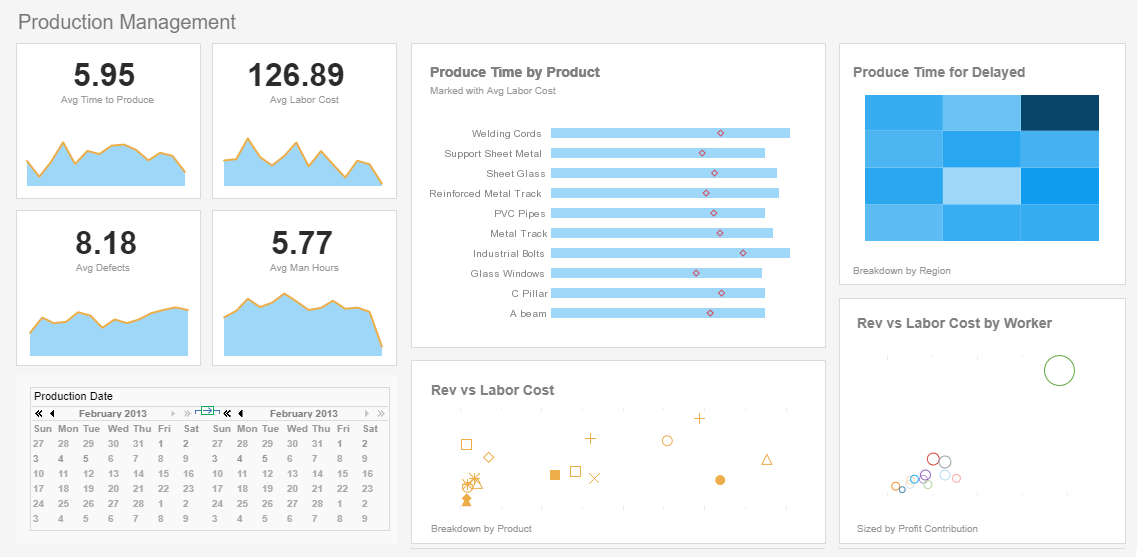Procedure for Creating a Chart
A dashboard chart displays a graphical view of summarized data (the graphical equivalent of a crosstab table). Viewsheet charts are interactive. You can zoom in and out, view chart details, and �brush� the chart to track data in multiple views.
This section explains the basic procedure for creating and editing a chart, including binding the chart to data, setting ranking order, aggregation method, and chart style.
To add a chart to a Viewsheet, drag and drop the Chart element from the component tree into the grid. Use the mouse to move and resize the chart as desired.
To bind the Chart to data, follow the steps below:
1. Click on the center of the chart, or click the �Edit� button in the topright corner. This opens the Chart Editor on the left side of the Visual Composer.
2. From the �Data Source� panel in the Chart Editor, drag a dimension onto the �X� field in the �Data� panel. This dimension provides the chart's X-axis data, and the dimension name is automatically used as the axis label.
3. Click the �Edit Dimensions� button, and select the desired ordering and ranking for the X-axis data.
4. From the �Data Source� panel, drag a measure onto the �Y� field in the �Data� panel. This measure provides the Chart’s Y-axis data, and the measure nameis automatically used as the axis label.
5. Click the ‘Edit Measures’ button, and select the desired aggregation method for the Y-axis data.
To set the style of the chart, follow the steps below:
1. In the ‘Data’ panel of the Chart Editor, click the ‘Select Chart Type’ button.
2. Click a chart type to select it, and then click the ‘Apply’ button. (You can also double-click the desired chart type.)
By navigating through the menu options, you can easily and inuitively create a pie chart like the one above.


